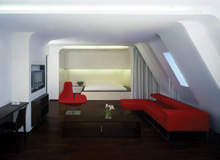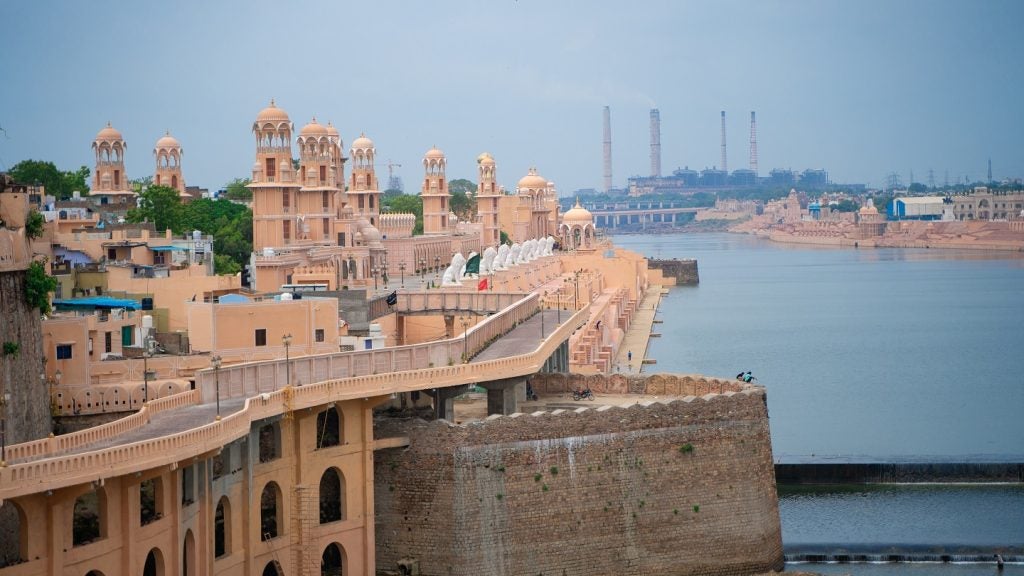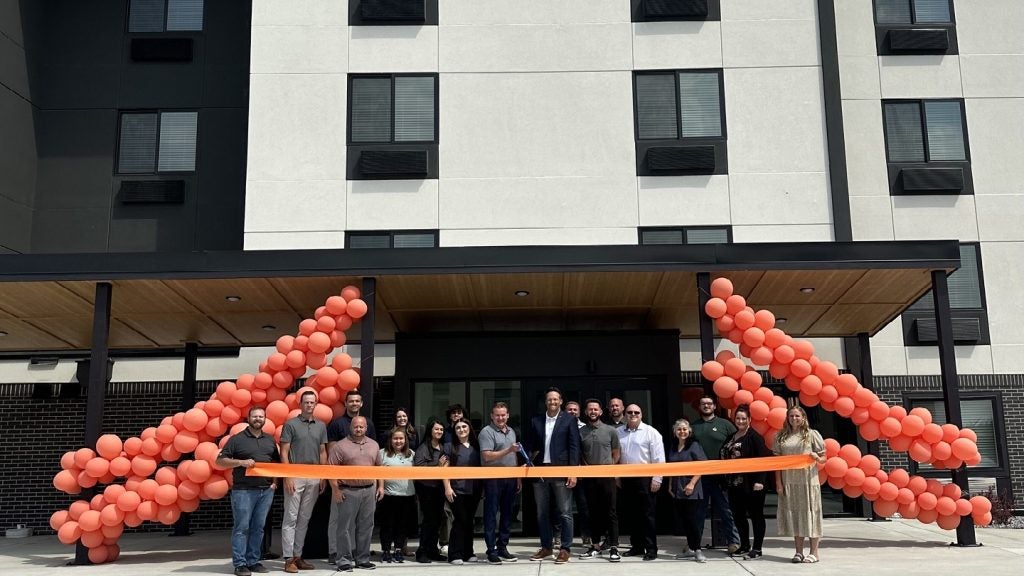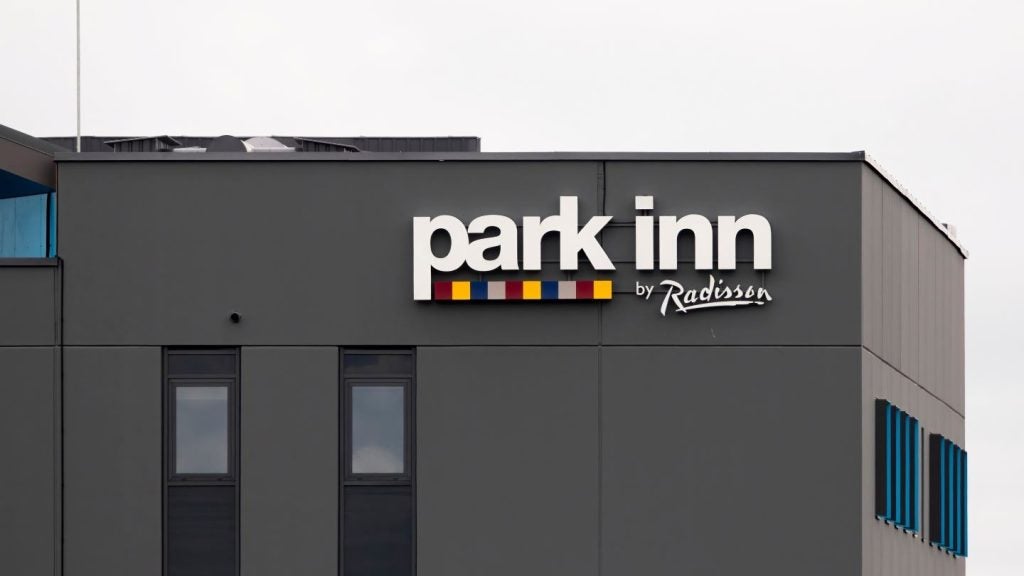
A grey facade just off Berlin’s prestigious Kurfuerstendamm bears no sign and no name. Hard to believe that behind the dull doorway stands Berlin’s hottest designer hotel, Q!
After winning the Travel+Leisure Design Award in February 2005, the media spotlight has continued to shine on Q!, with a raft of national and international nominations confirming the excellence of Graft’s smooth design.
The hotel was established when Wolfgang Loock, who owns two other hotels in Germany, and his partner Eva-Miriam Gerstner decided to open an innovative designer hotel – something Berlin was lacking despite its growing image as one of Europe’s most creative cities.
After a year of travelling to designer hotels all over the world in search of inspiration, they selected four design companies to compete for the job. During the selection period, Loock came across an article about three German architects who make up the LA-based company Graft, and how they had designed film star Brad Pitt’s studio and guesthouse. It did not take long for them to decide that they had finally found the right architects.
The plans Graft presented were immediately convincing. “We liked the organic flow behind their ideas and that the design was not just about optics, but haptics,” says Loock.
To come up with a design that is innovative as well as functional for this particular property was no easy task, as Graft’s Thomas Willemeit remembers: “The first plans we saw were shocking because the general layout of the hotel was tiny and they had packed the property with as many rooms as possible.” From an economical point of view, however, the owners had to push for at least 70 rooms.
How well do you really know your competitors?
Access the most comprehensive Company Profiles on the market, powered by GlobalData. Save hours of research. Gain competitive edge.

Thank you!
Your download email will arrive shortly
Not ready to buy yet? Download a free sample
We are confident about the unique quality of our Company Profiles. However, we want you to make the most beneficial decision for your business, so we offer a free sample that you can download by submitting the below form
By GlobalDataIGNORING THE RIGHT ANGLE
The first plan was to eliminate all unnecessary walls. “The lobby space and the restaurant were small,” explains Willemeit. “We decided to take away as much as possible.”
This then inspired the flow of the whole design. Instead of vertical walls dominating the building, a horizontal wall was created that stretches through the hotel like a continuous surface that can be used for seats, counter tops, floors and ceiling.
The main body of the hotel is dominated by its iconic deep red carpet, which weaves its way through the corridors and into the lift. “The carpet idea later sparked many associations, such as the flying carpet as a symbol for fantastic travel,” says Willemeit.
“But we saw that everything could be integrated, eliminated, folded out or into this continuous landscape. The design process seemed to flow effortlessly.”
Now that the hotel is finished, the flow concept continues as the guest interacts with the forms and shapes.
ROOMS WITH PERSONALITY
The hotel offers three types of rooms: one exclusive penthouse (60m2 and includes a flat-screen TV and DVD player), four studios (40m2 suites with bath) and 67 standard rooms (22m2, some with bath, others only with shower).
Although the rooms are fairly small, the design works. The surface, in which a bath is embedded, slopes down into a bed. The wardrobe wall slides into a table unit. There are no door handles on the cupboards, just a simple ‘push and open’ function.
The ceiling height is slightly reduced, with a faded image of two bodies entwined. The picture can also be found on the website and decorates the ceiling of each room by showing different fragments of the same image.
The room’s interior may seem minimalist, but Hotel Q! manager Eva-Miriam Gerstner explains that this gives the guests enough space for them to spread out their personal belongings and make the room their own. Of course, much of the minimalist design is also linked to the project’s tight budget.
STYLISH FLEXIBILITY
The choice of material was vital, firstly to keep the price down, and secondly for reasons of functional endurance.
“Regarding the budget, it was difficult to separate the design from the architecture as one started influencing the other,” says Willemeit. “So the end sum lies anywhere between €1m and €4m.”
The lobby, for instance, basks in the glow of red marmoreal linoleum. “We used it because it was the only material that would solve all the problems,” Willemeit explains. “We needed a material that is flexible and will align with the walls, curves and ceiling.”
The flexibility had to work well in a number of ways. In the evening the lobby and restaurant turn into a bar area. The surfaces had to be as durable as any other bar to cope with large amounts of people who might throw cigarettes on the floor and spill cocktails.
“By going for a deep red linoleum, we turned a material that people often associate with cheap flooring into something sleek, funky and warm.”
EXCLUSIVITY AND FUNCTIONALITY
In the last 15 years, hybridisation has swept the international hotel scene. Hotels are increasingly combining the traditional hotel functions with additional stand-alone features, such as conferences, spas or the design movement. At Q! the element that provides this function is the members-only bar.
Flexibility and style are the two attributes that reflect the philosophy of the hotel. The bar adds to the hotel’s facilities while establishing itself as an ‘in’ location for Berlin’s stylish set.
Lena Zahradnik, events coordinator for Q!, explains: “Our clientele consist mainly of people from what we call the 5M model: media, music, money, movies and mode. We offer an exclusive membership to the applicants that qualify according to our committee.”
The committee consists of Germany’s top journalists, designers, fashion icons and film buffs who meet once every six weeks to bring new members into this VIP club. The maximum capacity is 2,000 members and membership currently stands at around 800–900. Of course, the hotel’s audience goes beyond the 5M model, and tourists find themselves rubbing shoulders with businessmen.
The exclusive Q! membership offers clients the privilege of frequenting the Q! bar with two chosen guests. Otherwise, only hotel guests and members are allowed to lounge in this prestigious spot, which is open from 6pm to 3am. Many celebrities appreciate the hotel’s no-photographs policy.
Additionally, every few weeks special functions are organised, which often leads to the restaurant turning into a dance floor. With this event combination, the Q! bar is hoping to lure Berlin’s trendy crowd onto its premises.
London’s cocktail guru Ben Reed, famous for his work as bar manager at London’s Met Bar, trained and advised the Q!’s bar crew in the early stages of the hotel opening. “He even created The Q! house cocktail,” Zahradnik adds.
SAND, SOUND AND SENSES
Spa facilities have recently been added to the list of membership bonuses. Although the limited budget restricted Graft’s potential to create an optimal spa area, Graft added a special twist to the otherwise basic facilities by applying the method of appealing to the human senses.
The floor in the relaxation room is covered in sand, which is heated according to human body temperature. This induces a feeling of relaxation that is enhanced by tranquil music and aromatic scents. The lighting is soothing and the red couch chairs are invitingly embedded in the sand.
The spa area provides a sauna, a steam room, a Japanese wash, a number of different shower options and a range of spa programmes that promise to create a sense of well-being.
Guests can book spa sessions such as Yaa-Dom aromatherapy massage, Prkop, a Thai herbal massage, oil salt massage, hot and cold stone massage, and Le Chocolat, a special cocoa bean treat. Most sessions take an hour and cost around €70.
Beauty treatments are also available and include manual lymphatic drainage and reflexology, as well as yoga, Trager, a passive body treatment, and the option of booking a personal trainer for the duration of the stay.
STAR DEBATE
Condé Nast Traveller magazine listed Q! as one of the ‘coolest new hotels in the world’, and Q! describes itself as a five star-status hotel.
The Deutsche Hotel und Gaststaetten-verband is responsible for rating hotels in Germany and has strict checklist criteria that many designer hotels, including Q!, do not fulfil.
‘However, we pride ourselves on our service,’ Gerstner explains. “Our service is on a five-star level, providing all the extras, such as a limousine service. In particular, the private aspect of the hotel is highly rated by our guests.”
The entire service is based on personal connectivity. Q! is a small hotel, so staff know and recognise guests. But Gerstner wants more than just personal attentiveness from her employees. “My staff represent the hotel in everything they do,” she says. “Therefore I expect total commitment.”
But despite the disciplined approach, she favours a more laid-back view when it comes to her employees’ dress. “We don’t have a strict dress code here, although each staff member’s style is a vital element. I encourage that their dress sense reflects their individuality.”
LOCATION, LOCATION, LOCATION
When asked about the name of the hotel, Gerstner recalls: “It was a mixture between the funky-looking letter and the association with ‘kuh’, which means cow in German, but is homophonous with the letter Q, and the Ku-damm, which is an abbreviation Berliners use for the Kurfuerstendamm.”
The Kurfuerstendamm is the most popular boulevard in the capital, renowned for its chic shops and cafes. Since reunification, most young, dynamic projects came to life in the east district of the city, around the Mitte district. But recently it became clear that the west section is slowly picking up in terms of creativity. And Hotel Q! is a prime example of that.
Wolfgang Loock describes Q!’s clientele: “We have created a lifestyle hotel for the design-orientated and individual guest who travels a lot and does not wish to miss their accustomed creative lifestyle.”
Germany’s capital was in need of a designer hotel with first-class service. But Gerstner admits: “With this attempt comes a lot of pressure. It’s not easy being the pioneers – all eyes are on us.”
But how could anyone keep their eyes off the futuristic design that has cemented Graft’s position among Europe’s top designers. Since Q!, Graft has taken on further hospitality projects, which includes another collaboration with actor Brad Pitt. Watch this space.







